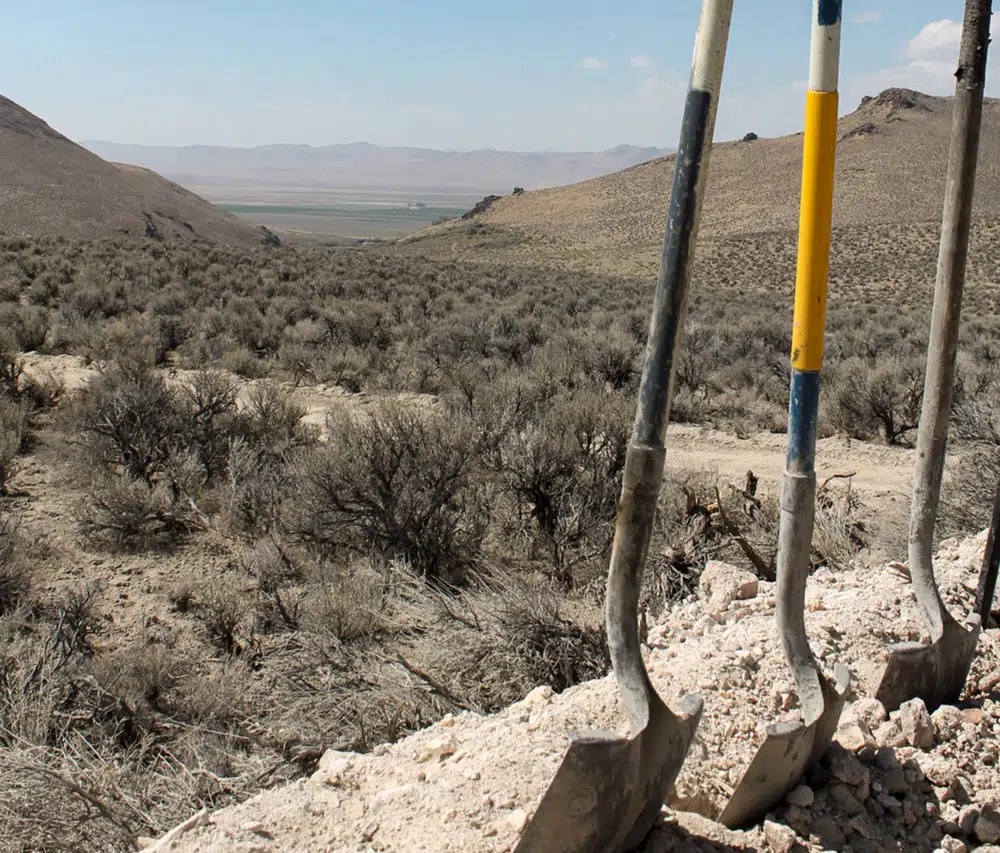Legislation & Regulation
Miners Win in Montana Water Court
September 2017 by Scott Harn
Terry and Melissa Smith and their son Casey are Montana miners who have several decades of experience. But the US Forest Service and Montana Department of Fish, Wildlife and Parks recently tried to put an end to their endeavours.
The Smiths have been working their claims on Thomas Creek off and on since 1996. Terry asked for and received permission from a miner working adjacent claims, Willison, to utilize his water right. This water right was valid for one-cubic-foot-per-second. It was originally established in 1937, changed hands a few times, and was conveyed to Willison in 1980. Willison filed for the water right under his own name in 1982.
Annual affidavits showed Terry worked his mining claims from 1996 through 2004, returning to reestablish his claims in the area in 2013.
Again Terry sought and received permission from Willison to use his water right on behalf of himself, his wife Melissa and son Casey, and the Smiths later purchased the full water right in 2016, though by that time the US Forest Service and Montana Department of Fish and Wildlife claimed there was no privity of title between the Smiths and Willison, and the water right had been abandoned. They pointed out that Willison had previously been served with a notice of abandonment and he failed to attend hearings scheduled by the Water Court. The Forest Service and Fish and Wildlife objected to the Smiths’ water right and filed their complaint with the Montana Water Court.
The Smiths did their homework and were able to produce documents, contracts and deeds showing the continued use of the water right from the 1930s to the present day. While there was a break in mining from 2004 until 2013, the water diversion device, pump, etc., were still maintained.
The trial began June 7, 2017. Department of Justice attorney James DuBois represented the Forest Service. Two attorneys were present for the State of Montana, though they did not call or examine any witnesses. The Smiths represented themselves.
Judge Russ McElyea ultimately ruled in favor of the Smiths on both privity and abandonment.
By digging through BLM mining claim records, and contracts and deeds kept by the County Recorder, the Smiths were able to effectively show the history of shared water use under the same water right for mining claims in the immediate area, including their own.
Regarding abandonment, the Smiths provided a letter they had sent to the local Forest Supervisor which declared their intent to maintain their diversion, pump and equipment while they were not actively mining during the span of 2004-2013.
Judge Russ McElyea ruled, “The evidence introduced by the United States focused principally on abandonment of unpatented mining claims. The owner of an unpatented mining claim has a right to remove minerals from public land. Mining claims are obtained independently from water rights, and are separate property interests. Ownership of one right does not mean ownership of the other.
“Mining claims and water rights are subject to different abandonment standards. A mining claim may be lost simply by missing an annual paperwork deadline, and may be re-established by locating a new claim in the same place. Abandonment of a water right requires nonuse and intent to abandon. While abandonment of a mining claim may suggest the water right used on it was also abandoned, that result is not automatic.
“Mining activity and water use along Thomas Creek followed a cyclical pattern. Mining claims were located, abandoned, and then refiled. Water was used on mining claims when they were active, and efforts were made to maintain diversions, pipelines, and other structures needed to use water for mining.
“This pattern of usage was inconsistent with abandonment of the Smiths’ water right. Accordingly, [water right] claim 41J 206226-00 was not abandoned.”
In 2014, the Water Court had ruled that Willison had abandoned his water right at a hearing he did not attend, but the Court was unaware Willison had given permission to use that water right to the Smiths and they had taken over maintenance to keep the diversions in place and functioning.
Regarding this issue, Judge McElyea wrote, “In documents submitted after trial, the objectors asserted Willison showed intent to abandon by failing to attend proceedings scheduled by the Water Court. The Water Court eventually sanctioned Willison for non-attendance by terminating his right. His right was only resurrected after new owners appeared and made a commitment to address the validity of Willison’s right on the merits.
“Though it is not defensible conduct, failure to attend court proceedings is common among self-represented litigants. The reasons for this behavior range from fear, to lack of understanding of the process, to willful refusal to participate. Where litigants show good faith, the Court generally responds with patience.
“The evidence at trial showed that Gene Willison is over ninety years old and has issues with balance that impact his mobility. Under these circumstances, Mr. Willison is entitled to some leeway. His failure to attend prior court proceedings is not evidence of intent to abandon.”
Terry Smith told me that he and his wife approached a lawyer with this case, but the cost was prohibitive and the lawyer was doubtful he could win it. The Smiths continued to track down all the past records they could find and decided to fight it alone. They knew they had not abandoned their water right and there is still plenty of good gold remaining on their claims.
I hope this case inspires some of you. It shows that miners can and do succeed when they are persistent and well-prepared, even when representing themselves against state and federal attorneys in a court of law.
A link to the 15-page decision can be found here: 41J-78, Montana Water Court, Upper Missouri Division, Smith River, Basin 41J.
Legislative and Regulatory Update
• Comment deadlines approaching for frog listings and habitat
• EPA seeks more control
• Comments due in Washington
• California dredging moratorium
• PLF sues to delist polar bear
More Fiddling While Forests Burn
Logging on federal land plummeted—over 84% since the 1980s. And that management tool was replaced with—nothing.
Legislative and Regulatory Update
• California suction dredging
• House shows support for public land use
Legislative and Regulatory Update
- Property rights advocate in running for top BLM spot
- “Draining the swamp” at Interior
EPA Tries to Intimidate Alaskan Miners
Alaska Governor Sean Parnell has ordered an investigation of the recent raids, saying he will not tolerate a state agency's participation in the sort of conduct displayed.
Subscription Required:
The Bawl Mill
• Our Readers Say
• Ask The Experts - Where can I get geological maps?
• Ask The Experts - What happens to gold during flash flooding in dry areas?
• Ask The Experts - How do gold and silver stocks react in market crashes?
• Ask The Experts - I need help with more in-depth mining research
• Ask The Experts - Is this gold?
• Legislative and Regulatory Update
• Entry-Level Metal Detectors for Gold Prospecting
• MMAC Update
• Nice Specimen Gold Recovered in Northern California
• How to Recognize Hard Rock Gold Ores
• The Coeur Rochester Mine
• Detecting and Recovering Those Tiny Pieces
• EPA Chief to Reconsider Paying Claims Over Mine Waste Spill
• Environmental Analysis Starts for Proposed Idaho Gold Mine
• Melman on Gold & Silver
• Mining Stock Quotes and Mineral & Metal Prices
Free:










